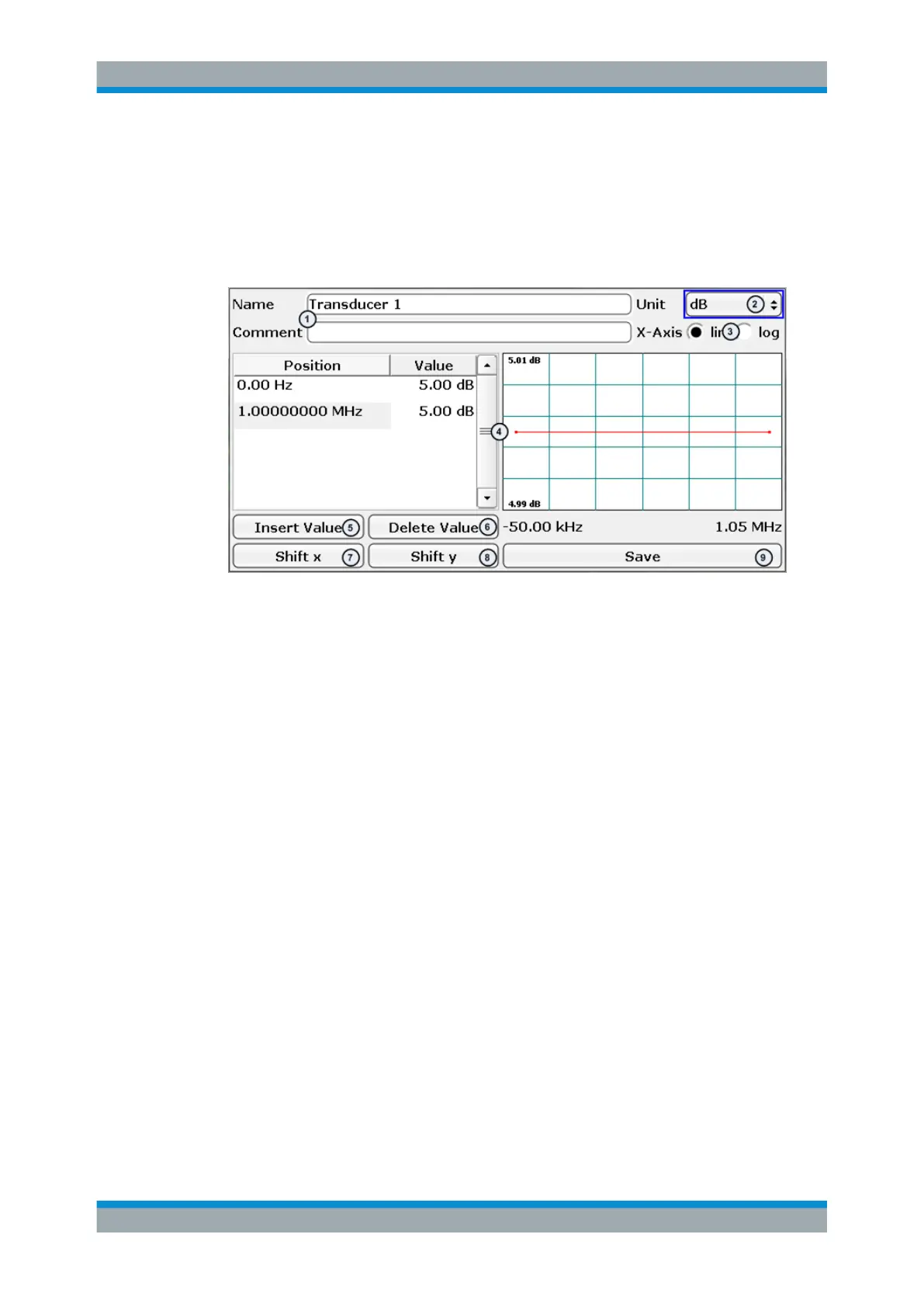System Configuration
R&S
®
ESR
509User Manual 1175.7068.02 ─ 12
You can define the characteristics in several ways:
●
Edit a transducer factor that already exists (➙"Edit" softkey).
●
Create a new transducer factor (➙"New" softkey).
●
Create a new transducer factor based on an existing one ➙("Copy To" softkey).
Each of the three options opens a dialog box that contains the functionality to charac-
terize a transducer factor.
1
= Name and comment of the transducer factor (➙"Edit Name" softkey)
2 = Unit of the transducer factor (➙"Edit Unit" softkey)
3 = Linear or logarithmic scaling of the frequency axis (➙"Edit Name" softkey)
4 = Table of data points and graphical preview of the transducer factor (➙"Edit Value" softkey)
5 = Button to insert a data point in the table (➙"Insert Value" softkey)
6 = Button to delete a data point from the table (➙"Delete Value" softkey)
7 = Button to shift all data points of the transducer factor horizontally by a certain amount
8 = Button to shift all data points of the transducer factor vertically by a certain amount
9 = Button to save and store the transducer factor on the internal hard disk of the R&S ESR (➙"Save Factor"
softkey)
Note that there are softkeys for several elements of the dialog box as mentioned in the
legend above.
A transducer factor can consist of up to 625 data points. Each data point is a pair of
values: the first value describes the frequency, the second value describes the level for
that frequency.
Enter the frequencies in ascending order and without overlapping.
When you save the transducer factor, the R&S ESR uses the name of the transducer
factor as the filename. The file type is *.tdf. If a transducer factor of the same name
already exists, the R&S ESR asks you to confirm before it overwrites the existing file.
The transducer factors and sets are stored in separate but fix directories on the internal
memory of the R&S ESR. You can create subdirectories for a more concise file struc-
ture and display their contents with the "Show Directories" softkey (you have to select
the directory first, though).
It is possible to delete a transducer factor at any time, if you do not need it anymore (➙
"Delete" softkey).
Dynamic range with active transducers
Instrument Setup and Interface Configuration – SETUP Key
